What Goblin Slayer Taught Us (and how it later failed to learn its own lessons)
Goblin Slayer got so much right... then came season 2.
[Spoilers are for Season 1 only, and I will tag where they begin and end.]
People view Goblin Slayer as a deconstruction of fantasy tropes, but I’d argue it’s a different take on Sword & Sorcery. In fact, I’d consider it more of a reconstruction of said tropes. It’s one of those titles that seems subversive at first. But, given half-a-chance, it quickly proves itself superversive and heroic.
Most likely, you’ll carry several expectations into a first viewing of Goblin Slayer.
First and foremost, when most people think of goblins, they think of low-level “yard trash”, or fetchquest-tier monsters.
Gobbos are a mere inconvenience while traveling to the typical tabletop gamer’s mind, the video gamer’s mind, and most others’. Goblins generally aren’t worth an adventurer’s time (maybe past those early levels).
Second, you should be asking yourself how an entire season’s-worth of interesting content can be derived around the simple concept of a man slaying goblins.
Creator Kumo Kagyu knew of the above two expectations people would have when writing his story, and he used them to his advantage. The story started life on an ASCII messageboard and as a light novel, so Kumo was able to see audience reaction in real time.
Third, you should know (and have probably heard by now), that this anime is absolutely not for children. However, what it does, though crass, is not done for shock value so much as for “Wood Perilous” purposes.
But that’s not to say there’s no shock value to the intro – Goblin Slayer hits the viewer like a freight train with a series of blood-curdling opening scenes–an extended prologue of sorts–that sets new expectations for the viewer. It lets you know upfront that this show is playing with an entirely different set of cards than you’re used to, showing you a scenario that’s as haunting as it is unforgettable.
Goblin Slayer Episode 1 spoilers start here:
GS starts with a flash-forward to an innocent-looking priestess covered in blood, shivering and horrified. The titular Goblin Slayer approaches, a ghostly red light shining in one of his eyes.
We hear a voiceover narration, a cheerful, more naïve version of the healer saying she someday wants to be an adventurer.
The camera pans over a cliché mediaeval Europe-esque setting. The same priestess we saw earlier is being interviewed and filling out an application. A cute, friendly guild mistress is working the front desk of the adventurer’s guild with a disarming smile.
Japanese RPGs often have this aesthetic, this cheerful visage for their adventure guilds, cute smiling girls handing out adventure billings without a care in the world. Even the background music is happy and upbeat.
But following that grotesque intro, this scene stuck in my mind and left me with an uneasy, unsettled feeling.
It’s like the whole place is set up just to mislead the poor girl - and other green adventurers like her. A bit like how an army recruiter might’ve sweet-talked teens into heading to the Vietnam War.
The priestess said her lifelong desire has been to help other adventurers, and that she’s been training in a temple her whole life to make that dream come true. Which insinuates heavily there’s some propaganda in this world, an effort to romanticize adventuring to the youth.
The priestess overhears the chatter around the guild, seasoned adventurers bragging and posturing about the types of creatures they’ve slain, and there’s heavy speculation on whether or not they can handle even stronger monsters like Manticores and Demon Lords.
These are the hotshots of the war, the ones who survived with a killcount.
She’s handed a porcelain identification tag, and it’s designed to look conspicuously like a soldier’s dog tags. The guild mistress tells of ten adventurer ranks and explains how the priestess is now “Porcelain”, the first rank. There’s a bit of handwavium at the end of the conversation when she tacks on that these ID tags might be a way to identify her body, “should something go wrong”.
The priestess acts like receiving her ID tag is one of the best things that’s ever happened to her, but, oh boy, it sure makes for some dark foreshadowing.
A friendly group of adventurers show up, all smiles, all confidence. They’re fairly low level, but they’ve seen some early success. Turns out they’re looking for a healer so they can get on with an urgent quest. Seems some gobbos have attacked a village and managed to steal some supplies and livestock.
This itself is interesting, because it indicates the goblins of this world have needs that they must fulfill, indicating that the monsters interact within the greater economic system of the Goblin Slayer world.
Goblins are economy disrupters and their raids are felt in impactful ways, which adds more realism to the threat. The group leader tacks on, “They even kidnapped some girls,” which is why he feels this quest is urgent.
The guild mistress shows concern, saying all three of these adventurers are porcelain rank. She strongly advises they wait for at least one higher rank adventurer before they depart.
But their leader is anxious to get going and save these kidnapped girls, and he’s confident that the four of them could easily handle a few goblins. The rest of the group agrees emphatically so the priestess decides to go with, despite the many red flags.
Deep in a lush forest, they find the goblin lair, a cave secluded in a rocky valley. A crude and frightening pagan skull effigy at the entrance gives the priestess pause. She takes a deep breath before daring to enter the dark cave, as there’s this distinct feeling they’re invading a space where they don’t belong.
It’s a tight, dark, claustrophobic cave, the kind of place that feels like getting back out may not be so easy.
When the priestess voices her concerns, the party leader laughs and calls her a “worrywart”, stating goblins are like children. They’re the weakest monsters you could possibly run into.
In another conversation, it’s revealed the party doesn’t have enough potions and are depending on her to keep them alive.
She warns that she only has enough mana to cast three heal spells. But the group’s confidence is through the roof, believing this mission will be easy and that one day they’ll work their way up to slaying a dragon.
When they finally encounter the goblins, things go well, at first.
But you get this sick feeling in your stomach the moment things start going horribly wrong. It’s all the slight miscalculations that add up: The mage who can’t quite see without her glasses, the ceiling … not providing quite enough clearance to swing a longsword overhead, the poor communication, and a failure to stick together.
And when things go out of control, they spiral fast.
They went in pompous, full of pride, only to be blindsided by reality. This is what happens to people who are gaslit to believe that threats are not threats. This phenomenon is what happens when we fail to teach our children of the Wood Perilous.
I won’t fully get into the grotesqueries of what happens to her teammates. But our priestess is the last one standing. And, by the end, you see the same disturbed look on her face as we saw in the intro. It’s like the world had forgotten these creatures were depraved monsters, capable of the most unthinkable acts. They’re Evil with a capital “E”.
The reality of an arrow suddenly in your shoulder, or a dagger jammed past your own ribcage, or monster claws shredding your back to bits and pieces while you helplessly can’t turn around, or the horror of things unspeakably worse than death - they don’t fully dawn on you until it’s physically happening to your body. Only then do you wake up.
All manner of cruelty below the depths of humanity are happening in this dark cave around the priestess, obscured just enough by darkness that the sounds and art of suggestion are enough to fill in the rest. The cruelties found here stand in stark contrast with the friendly façade and smooth veneer of the adventurer’s guild, to great effect.
This is a story about the realities of war. A realistic approach to what a world filled with monsters could really be like.
And it illustrates well what happens to those who have been disarmed of threats - A Japanese teen climbs Mt. Fuji without proper gear, an amateur father and son diving team attempt a spelunking expedition into Eagle’s Nest, a female activist hitchhikes through Turkey to “promote world peace”, only for things to turn unimaginably ugly.
It’s important to note that, contrary to what you may hear, at no point does the show fetishize any of this. Instead, it shows the danger of Evil, which sets the stakes sky high and makes every decision difficult, every situation unnerving.
What follows is the true introduction of the main character, heroism and expertise on full display, and a surprisingly emotional journey of hard-learned lessons for the priestess. This show–even this episode–gets poignant like few anime I’ve ever seen.
The priestess is emotionally rocked by this event; a character bewildered in the fog of war Saving Private Ryan-style, her character experiences growth the likes of which you’ll rarely see in a single episode of anything.
But this introduction also sets up several expectations for the end of the season. It’s similar, in that respect, to the prologue for A Song of Ice and Fire, in that you know there’s going to be a situation presented where even the Goblin Slayer will get in over his head.
^EPISODE 1 SPOILERS END HERE^
The Perils of the Dungeon Crawl
This show captures the dungeon crawl experience perfectly. Being prepared is sometimes not enough – And this is the kind of show where characters bring canaries to test for breathable air.
Even if you’re taking your time, carefully disarming traps, knowing what to look for, a dungeon can still catch you unaware, throwing you into an unexpected and dire situation within seconds, forcing you into desperate improvisation.
The magic system is also limited. Characters can cast magic three times a day. That’s it. If you’re a healer and you’ve cast three spells, all you’ve got left is your remaining comrades and your ineffective staff to hold the monsters at bay. The characters in this world have to come with MacGuyver-like supplies as a backup plan if they want to survive.
Goblin Slayer late season 1 spoilers start here:
In a scenario late in season 1, the group is fooled by a trap; a skeleton disguised as a prisoner to serve as the decoy. The door behind them seals shut and poison gas starts filling the room.
Goblin Slayer, thinking on his toes, coats several pieces of fabric in charcoal and has the party members breathe through them. Then they use a mixture of lime and volcanic soil to seal off the gas leaks, preparing for the inescapable ambush that’s likely to follow.
These are the kinds of tight scenarios the characters are regularly faced with, and it keeps you at the edge of your seat because the whole time, you know the grim and dire consequences that would follow, should they ever lose.
^LATE SEASON 1 SPOILERS END HERE^
What we can learn as writers
Dungeons are cool, but they can also be horrifying. Have your characters go into situations thinking they’re prepared, only to find out they’re not. Raise those stakes. Put them in desperate situations where their various areas of expertise and ability to work as a team can shine.
And don’t forget that magic should always have a cost: The simple inclusion of limiting mages to three castings per day ratchets the tension brilliantly.
If your story and target audience can handle it, monsters should be just that: monstrous. If your story is realistic, do not shy away from Evil, pretending like it doesn’t exist. Shying away from the darkness of the world creates a gaslight effect, which could help reinforce a reader’s belief that the real world is safer than it actually is.
Do not avoid portraying danger for fear of offending someone, because in an unhealthy society, that is where the danger lies. No more girlbosses easily handling foes twice their size.
Where to start with Goblin Slayer… and where to stop
If you want to experience Goblin Slayer, I highly recommend you check out the first episode of the anime in Japanese with English subtitles and see how it sits with you. The English dub goes a little too overboard with the screaming, but the Japanese voice actors get it just right. The anime is also far less graphic than the manga, so if you value custody of the eyes, the anime is the way to go.
If you can stomach the first episode, I’m happy to say the rest of the season is much easier to handle. And then you get to watch the movie (Goblin’s Crown), which is one of the best anime movies I’ve ever seen.
Once again, don’t show Goblin Slayer to your children, and I would honestly hesitate showing this to teens. Anyone who can’t handle Game of Thrones probably shouldn’t be viewing this show.
But for those of us who can appreciate the innovative storytelling this IP has to offer, it was a rare treat.
After that, stop. Season 2 threw everything we just discussed out the window and lost its unique identity. It became another dreaded “cozy fantasy”, with the original director and art team getting replaced by an unambitious B-team.
But that’s okay, because Season 1 tells a complete, satisfying story, and so does the movie. In the end, it turned out Season 2 wasn’t really needed.
Here’s hoping that, if a Season 3 ever does get announced, they at least let the original director to return to the helm and treat this IP with the care and respect it deserves.




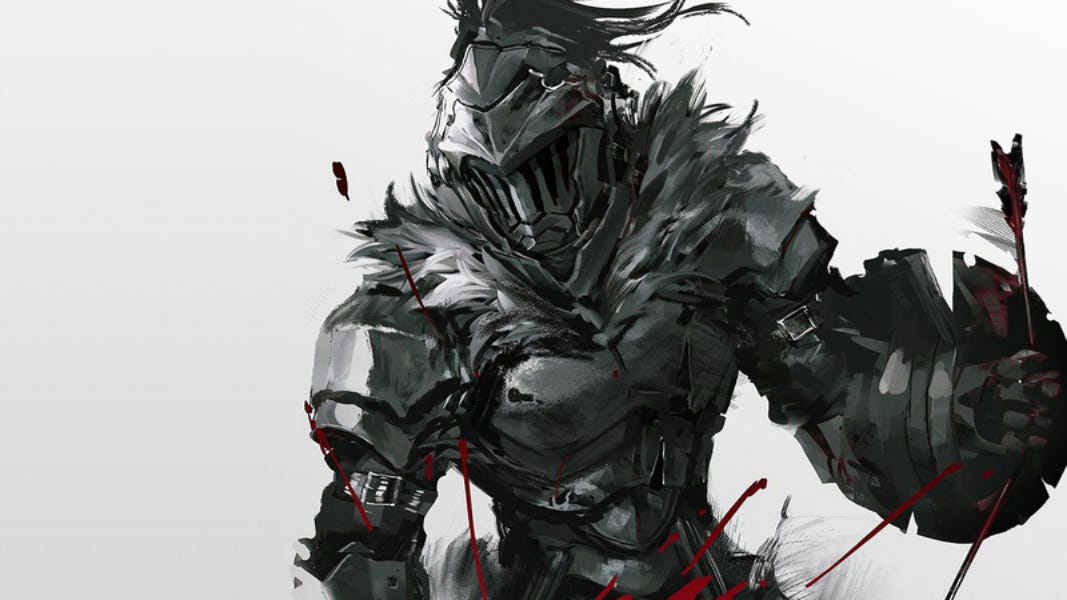
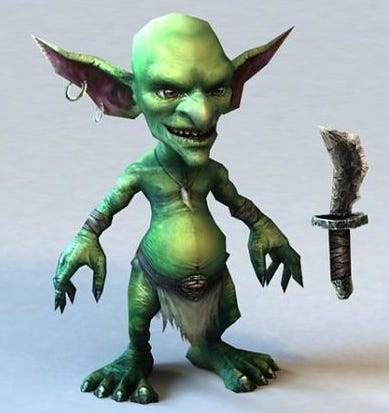
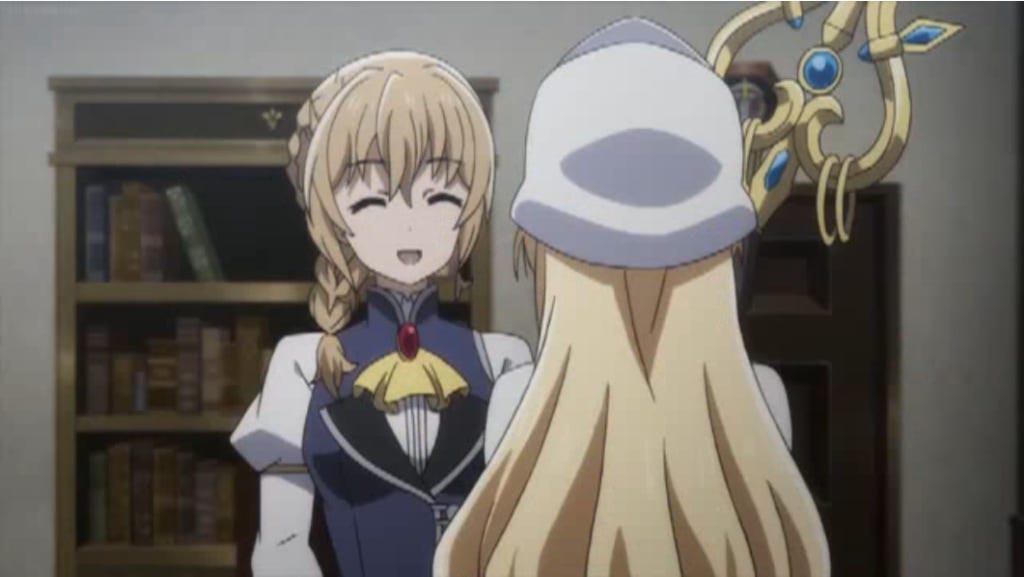
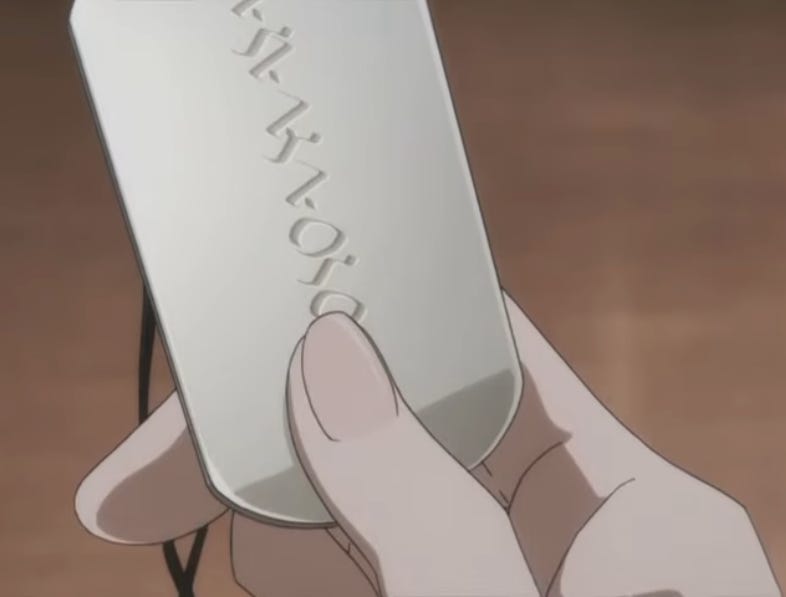
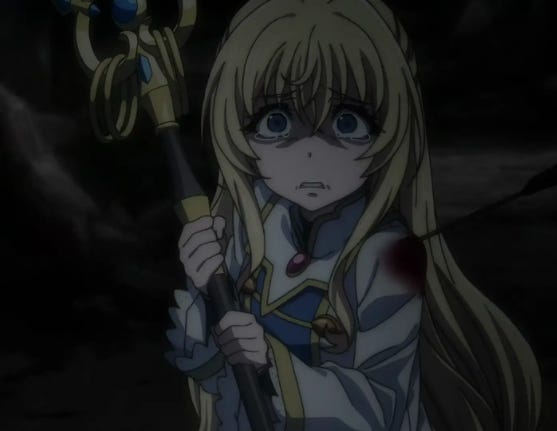

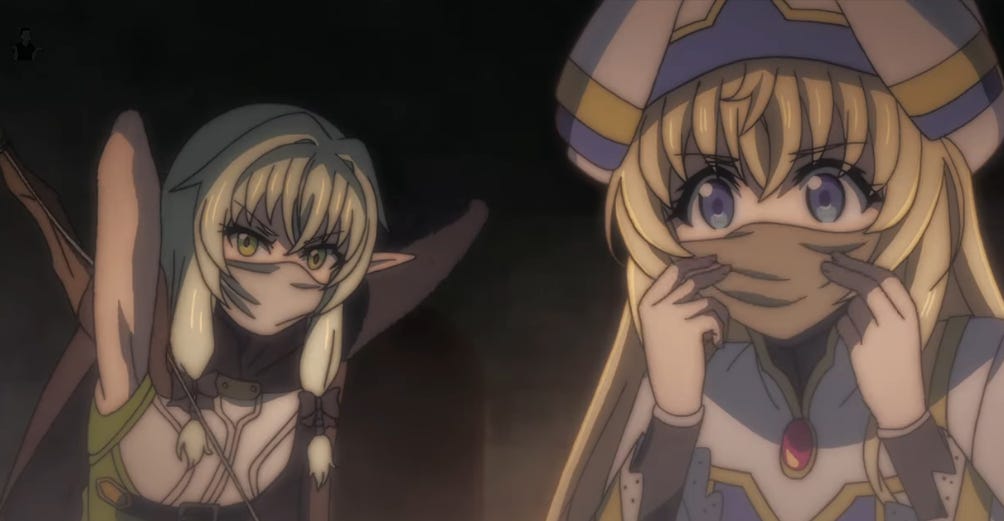
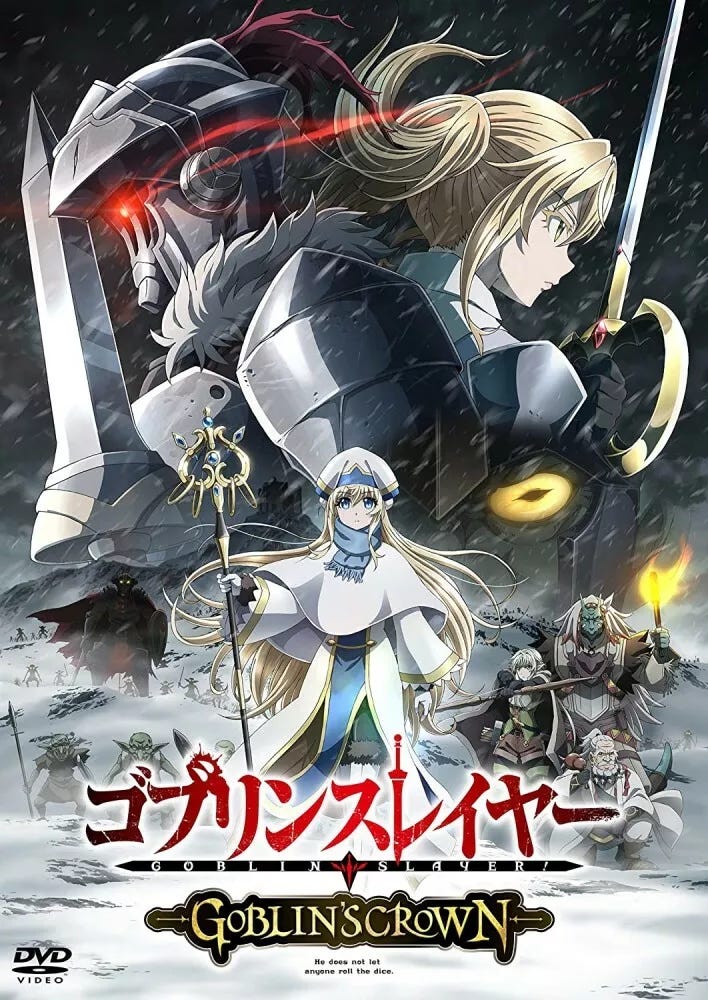
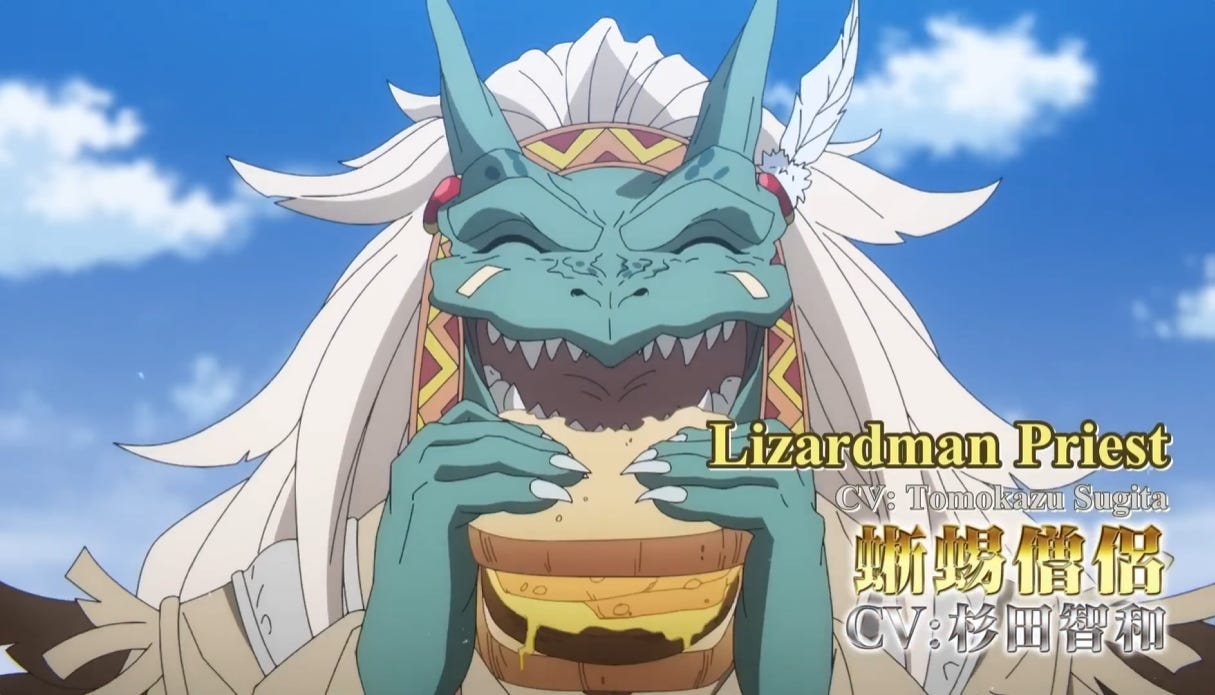
I wasn't horribly disappointed by season 2, but then again- it wasn't that great, either. And it certainly didn't smack you right in the face like that first episode did. Man, what a shock that was.
Season 2 did not do the source material justice. I liked the manga onward, but the animation, storytelling, skipped elements in the anime - meh.